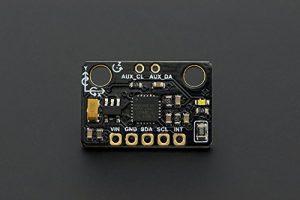Chosen sensor: IMU
In order to determine our position, our joint angle, we will need a sensor to do so. Accelerometers have been implemented for this purpose in previous studies. However, the disadvantage to accelerometers is that they are very prone to noise.
The gyroscope is another sensor capable of measuring our desired rotation orientation, however there is a disadvantage to these as well, known as gyroscopic drift. Over long timescales, the gyroscopic data will increasingly become more inaccurate.
Computing rotation from just one of these sensors can be done, but becomes increasingly difficult to implement in real time. However, both the accelerometer and the gyrsocope have their advantages that we would like to implement as well. Rather than choosing between one or the other, why not use both?
Averaging the data coming from accelerometers and gyroscopes will approximate the orientation much better instead of using exclusively one. This is called sensor fusion, and seems to be a much more attractive alternative for calculating the joint angle.
The Inertial Measurement Unit (IMU) is a sensor that combines a 3-axis accelerometer, 3-axis gyroscope, and a digital motion processor. Sensor fusion is much more simpler to implement with one IMU sensor instead of multiple accelerometer and gyroscopes. Furthermore, the IMU itself produces more accurate data.
For now, these IMUs are what will act as the feedback elements of our control system. As we define more degrees of freedom for the reaching movement, we will definitely need more sensors; other different types of sensors are being considered as well. Below is a picture of the MPU6050, the IMU we will be using.


 Comments(0)
Comments(0)
Leave a Reply